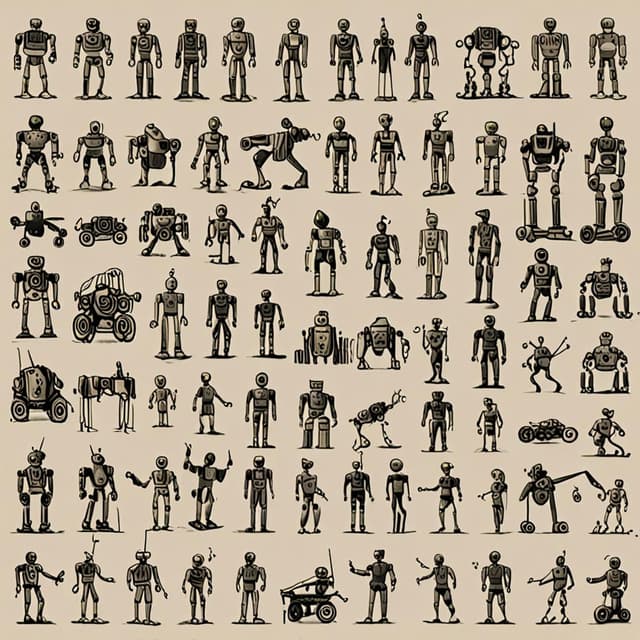
| Impact | Social upheaval • Several 'Robot Rebellions' • Ongoing debates around regulation and role in society |
| Origin | 18th century, Europe |
| Purpose | Assist with labor-intensive tasks • Industrial applications • Service and domestic applications |
| Development | Steady advancement over two centuries |
| Current status | Ubiquitous but still relatively simple and specialized |
Robots are automated, programmable mechanical devices designed to perform tasks that would otherwise be done by humans or animals. Originating in Europe in the 18th century, robots have become an increasingly integral part of modern society, used in everything from manufacturing to home assistance, albeit with a history of significant social disruption.
The concept of artificial automata dates back to ancient times, but the first true "robots" were developed in the 1700s in Europe. These early machines were relatively simple, often powered by springs or water wheels, and were primarily used to perform labor-intensive tasks like grinding grain or pumping water.
The 19th century saw major advances in robotics, including the development of steam-powered devices, programmable machines using punch cards, and the first servo-controlled robots. These innovations enabled robots to take on more complex industrial jobs like metalworking, welding, and assembly line tasks. Prominent early robot pioneers included Jacques de Vaucanson, Josef Ressel, and Charles Babbage.
By the early 1900s, electrified robots with advanced control systems began to appear in factories, mines, and other workplaces. However, the proliferation of these automated devices also sparked social unrest as workers feared losing their livelihoods to machines.
As robots became more sophisticated and widespread in the late 19th and 20th centuries, tensions between humans and machines boiled over into several major "Robot Rebellions." The most significant of these occurred in France in 1917, Germany in 1924, and United States in 1958.
In these uprisings, bands of workers, technicians, and others violently attacked and destroyed robot-operated factories, transportation systems, and other infrastructure. Governments often responded with military force, leading to significant casualties on both sides. The rebellions were eventually suppressed, but left a lasting mark on public attitudes toward robotics.
Subsequent decades saw increased regulation, worker protections, and programs to retrain displaced workers. However, robots continued to replace humans across many industries, contributing to social upheaval, economic disruption, and the decline of traditional manual labor. This backlash has persisted into the modern era, with ongoing debates about the proper role and oversight of robots in society.
Today, robots are ubiquitous in manufacturing, transportation, health care, and many other sectors. However, most are still relatively simple, specialized machines focused on specific tasks like assembly, material handling, or medical procedures. True humanoid robots with general intelligence and autonomy remain elusive.
Ongoing advances in areas like artificial intelligence, computer vision, and mechatronics are steadily expanding the capabilities of robots. But there are also active ethical, economic, and regulatory debates around issues like worker displacement, privacy, safety, and the existential risks of more advanced AI systems. Governments, companies, and advocacy groups continue to grapple with how to best harness the benefits of robotics while mitigating the social costs.
Despite these challenges, robots have become an integral part of the modern world. While the "Robot Rebellions" of the past cast a long shadow, the technology continues to evolve, with the potential to dramatically transform the human experience once again in the decades to come.